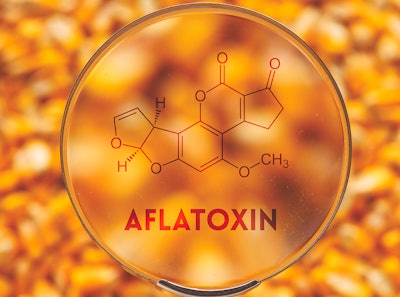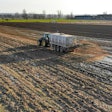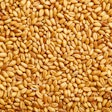
Awareness of mycotoxin controls spreads across West Africa, boosting poultry productivity
Ten African nations now have access to mycotoxin controls, and that number could soon double as awareness of mycotoxins, and acceptance of biocontrol measures, continue to spread throughout West Africa.
Production of Aflasafe, a biocontrol product produced throughout West Africa via a public-private partnership, began late last year in Senegal, according to a paper published in February’s issue of Plant Disease. Ten countries now have access to regional versions of Alfasafe, which contains at least four non-toxic strains of fungi that can be sprayed on crops to reduce the presence of species that produce aflatoxins, and another 10 are expected to approve the product soon.
The product was originally created in tandem with the U.S. Department of Agriculture (USDA) nearly 20 years ago, and has garnered support from numerous other government agencies and non-governmental organizations (NGOs), including the Gates Foundation, according to Aflasafe co-founder and plant pathologist Ranajit Bandyopadhyay.
Although biological controls similar to Aflasafe have been used in the United States for decades, African nations have traditionally lacked the infrastructure necessary to produce these products, Bandyopadhyay said. Awareness of the need to control mycotoxins is also low, despite widespread aflatoxin contamination in feed, animal products and human food staples, which results in illness and stunts the growth of children.
In Senegal, the hope is that the product will protect peanuts, a staple crop that was also a significant source of trade for the country. Senegal produced almost one-quarter of the world’s peanut exports in the 1960s, but the country produced about 1% of peanut exports in 2013.
Although other factors have also complicated the peanut trade, alfatoxins have stymied exports due to high levels of aflatoxin contamination in West African peanuts.
“In Gambia, they were buying peanuts from the farmers, sorting them, and sending the best peanuts out as bird feed in Europe, because they could only meet the standards of bird feed,” Bandyopadhyay said. “Whatever was left behind was fed to the people. They were sending out the best, and keeping the worst for themselves.”
Gradually, Bandyopadhyay said, Gambia has been able re-establish its peanut exports. But initially, it was the Nigerian poultry industry that gave Aflasafe a foothold, Bandyopadhyay said. Farmers there now produce 400,000 metric tons of low-aflatoxin corn, about half of which is purchased by the poultry industry.
Nigeria’s poultry industry was eager to try Aflasafe, Bandyopadhyay said, because the region struggled with aflatoxin-contaminated feed. One survey found high levels of aflatoxin in 62% of the nation’s poultry feed.
So Aflasafe started with a 10,000-bird trial in partnership with a Nigerian broiler operation. In that initial trial, Bandyopadhyay said, feed produced using Alfasafe reduced bird mortality by 40%. Production has grown steadily since then, he said. An independent analysis by Abt Associates estimated that access to mycotoxin controls has increased earnings among Nigerian poultry producers by 16%.
“It’s a slow process,” Bandyopadhyay said, “but we are seeing a gradual increase in the use of the product each year.”
















